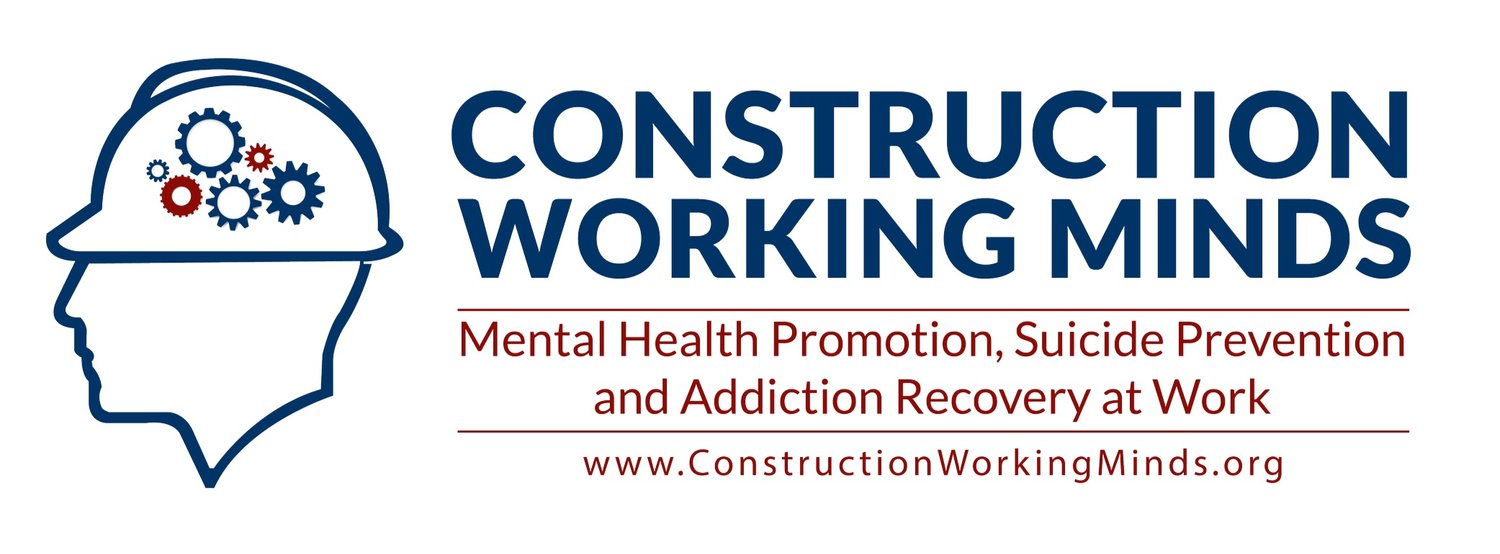Construction Industry at Risk
THE ISSUE
The Construction Industry is at High Risk for Suicide.
Here is why the nation and the industry should make suicide prevention a priority:
National Statistics and Trends:
• Almost 50,000 suicides occur each year making it the 10th highest cause of death for all ages (CDC).
• Each year, self-inflicted injury accounts for 836,000 emergency department visits (CDC).
• Suicide is the 2nd leading cause of death for men 18-47 in the United States (CDC).
• More people die from suicide than from motor vehicle crashes (CDC).
• Men in high skill and high stakes occupations (i.e. supervisors of heavy construction equipment) are almost 1.5 times more likely to die by suicide (Business Insider)[1][2].
• People in occupations requiring no education after high school are more at risk for suicide (Review of 34 Studies).
• The Opioid and Crises are connected: https://www.nejm.org/doi/full/10.1056/NEJMra1802148
“We have a tough guy mentality – suck it up and get through whatever is thrown at you. The idea to be open to something that is personal, at work, is difficult. Usually there is a perception that you’ll be met with indifference. The Operations Staff needs to understand that it is okay to discuss personal issues.””
The Goal: Zero Suicide
Workplaces that adhere to a strong culture of safety set a goal of zero workplace-related fatalities. Suicide is no exception.
What if construction industry leaders believed that suicide could be eliminated and did everything in their power to prevent it?
Leadership and role modeling matters!
The Construction Industry Blueprint helps us start to build the policies and practices we need to have in place for zero suicide to become a reality. No one should die in isolation and despair.
All lives are worth saving!
Construction Industry Statistics:
• Men out-pace women four to one in suicide deaths and white working-age men have the highest suicide rates. However, among women, workers with the highest suicide rates were in construction and extraction (134.3 per 100,000).
• The construction industry is in the top nine occupations at risk for suicide (BLS).
• CDC ranked Construction/Extraction as #1 industry for male suicide death and noted in their findings 20% of all men who die by suicide were in construction/extraction (Peterson, et al, 2018)
• According to new research by Florida State University about 40% of all construction workers have thought about suicide at some point in their career (Gai, et al, 2018).
Industry Risk Factors:
Access to lethal means: People who have access to, and familiarity with, lethal means like firearms, pills and high places, are often less afraid and more capable of self-inflicted harm by these means.
Capability for fearlessness: When a workplace has a culture of recklessness, bravery and/or stoicism, and people are rewarded for being tough, they are often less likely to reach out and ask for help.
Exposure to physical strain or psychological trauma: Workplaces that expose employees to physical or psychological injury through traumatic life-threatening events can experience symptoms of chronic pain, post-traumatic stress, or burnout that can contribute to suicide despair.
Culture of substance abuse: Workplaces that informally support a culture of self-medication to relieve stress can experience escalating substance abuse problems that also increase the risk of suicide.
Fragmented community/isolation: When workers are often in transitory or seasonal employment, they can experience a lack of belongingness and a higher level of uncertainty that adds to a sense of isolation and lack of meaning.
Humiliation/Shame: When a humiliating job failure occurs and the employee’s main source of identity is their work, this event can trigger depression and suicidal thoughts.
Entrapment: When employees feel that they must do something they would not normally do because they see no other way to meet their goals, hopelessness can result. Sometimes workers in the industry experience the “golden handcuffs” phenomenon: feeling entrapped into the one line of very stressful work because they see no other way to sustain a certain standard of life for themselves and their families.
Workplaces involved in community suicide deaths: Construction sites that include bridges and buildings are sometimes the death sites for suicide. These types of community suicides can trigger suicidal thoughts or depression in job site workers.
Nature of the work: Cyclical work with regular periods of lay-offs and re-hiring causes uncertainty about employment. Workforce and skill shortages result in laborers working overtime to complete projects. The combination results in a “pressure cooker” atmosphere that can overwhelm employees.
Sleep disruption: Working long or abnormal hours can effect sleep, causing mental and physical exhaustion. This effects performance, increases the probability of injury, and can exacerbate other mental health concerns.
According to the CDC, construction/extraction has the highest rates and numbers for male suicide deaths. In fact, in one study 20% of all men who died by suicide were in construction/extraction.
[1] Lubin, G. (2011, October 18). The 19 Jobs Where You’re Most Likely To Kill Yourself. Retrieved August 5, 2015.
[2] NIOSH (2015). National Occupational Mortality Surveillance (NOMS). U.S. Department of Health and Human Services, Public Health Service, Centers for Disease Control and Prevention, National Institute for Occupational Safety and Health, Division of Surveillance, Hazard Evaluation and Field Studies, Surveillance Branch. Retrieved August5, 2015.
[3] Milner, A., Spittal, M., Pirkis, J., & Lamontagne, A. (2013). Suicide by occupation: Systematic review and meta-analysis. The British Journal of Psychiatry, 203(6), 409-416. doi:10.1192/bjp.bp.113.128405



